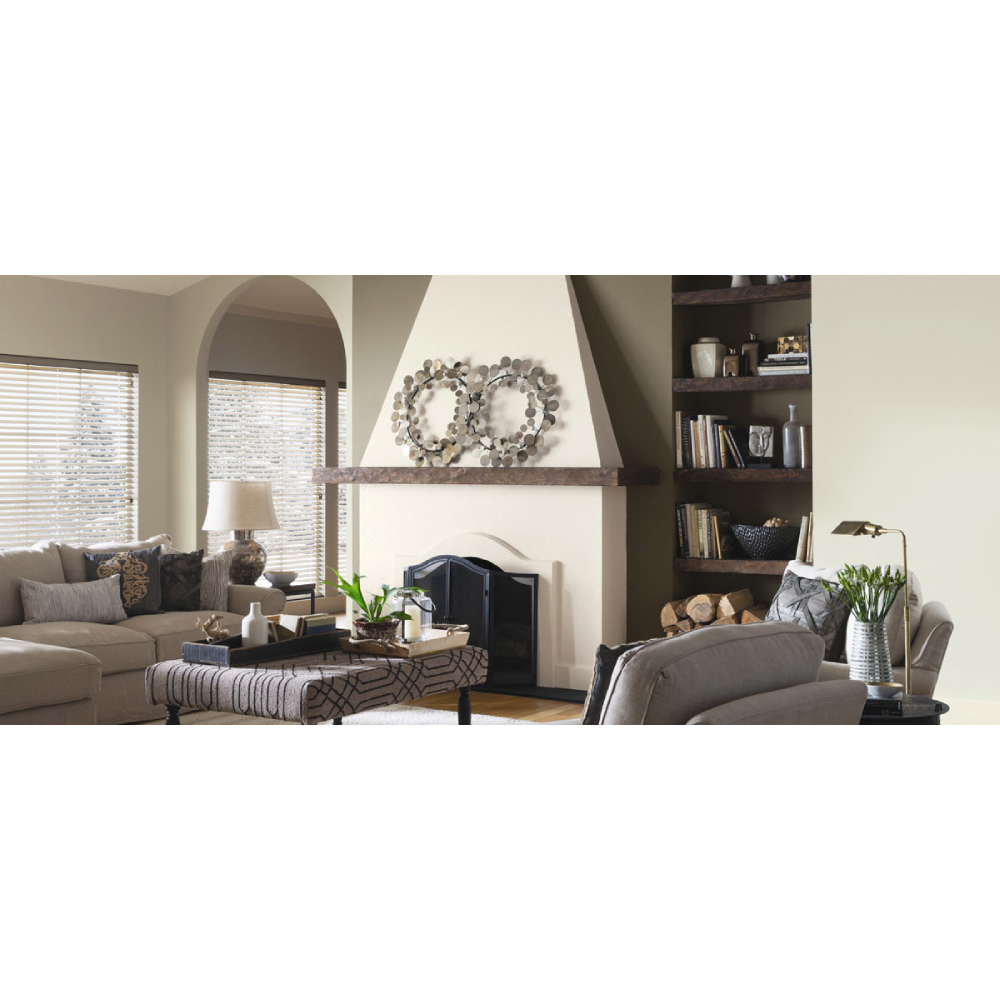Description
Fireplace Accent Color
By Christine Brun
Most people stick with white in a small house. I don’t know if it is fear that drives them or insecurity. It has always been a bit of a chore to convince people that if they paint the entire room in a color, they will like the results. Paint is at once the simplest vehicle for interior improvements and one of the scariest when it comes to tiny spaces.
I work hard at encouraging clients to avoid painting just one wall a deep accent color. Often the room will become chopped up and the effects are not as pleasant as originally imagined. So many people imagine that having one peach or gray wall will make such a difference in their home, but it rarely works that way. However, there are always exceptions and we are looking at a brave illustration! One of the reasons that this works is the strong accent color follows several well-built architectural details. This is not one straight wall. The dark paint serves as a loyal background for the interesting shape of the fireplace and chimney. This becomes a sculptural wall and because the fireplace matches the rest of the space, it flows nicely. Even the art objects repeat the white color and make the recessed shelves snuggle into the special color.
Understand that this strong accent color works mainly because it has become the background for the fireplace. How different it would be if the window wall was washed in an accent color? So it is important to seriously analyze a given space before cooking up a concept of an accent color. If your room has no architectural detail except typical millwork — window trim and baseboards — you likely would be better off painting the entire room a color. Keep the trim and the ceiling in your version of white or off-white. On the other hand, if you are blessed with appealing features such as niches, arches, angles or other architectural details, then you might be able to create a more complex paint schedule.
In general, the greater the contrast between surfaces, the choppier the flow. For instance, if you have a medium-wood floor, then try to keep your wall no darker than the floor. In this way, the two surfaces will flow together. The same is true if the flooring is carpet or tile. It follows then that if you want to paint walls in a small room a medium khaki color it would not be the best thing to install deep blue carpet. You would want to keep the carpet close in value (lightness or darkness) to the walls. Perhaps you would be more successful with a sage green or a sky blue carpet.
When you have a darkish floor that you cannot change as a renter, try to use that as a base and keep the rest of the palette light and fresh. For example, if all of the other woodwork is white, try soft sky blue or a soft citrus color. This way you achieve color without closing in the walls while still avoiding white. You could use more earthy colors as well for a less feminine feel: light tan, Tuscan gold or a light gray. When floors are dark and the wood trim is stained, keep your walls and ceilings in a midtone and avoid stark white to bring all of the pieces of the room together.
In general, if you paint a ceiling dark, then it will feel as if it is bearing down on you. Unless the ceilings are 16 feet or so, you will not want to do this. If you paint the far wall of a hallway a dark color it will come toward you, too. The reverse is true: If you wish to have a surface recede, then paint it lighter than the adjacent walls.
Photo Credit: Sherwin-Williams
Christine Brun, ASID, is a San Diego-based interior designer and author of “Small Space Living.” Send questions and comments to her by email to christinebrun@sbcglobal.net. To find out more about Christine Brun and read features by other Creators Syndicate writers and cartoonists, visit the Creators Syndicate website at www.creators.com.







Reviews
There are no reviews yet.